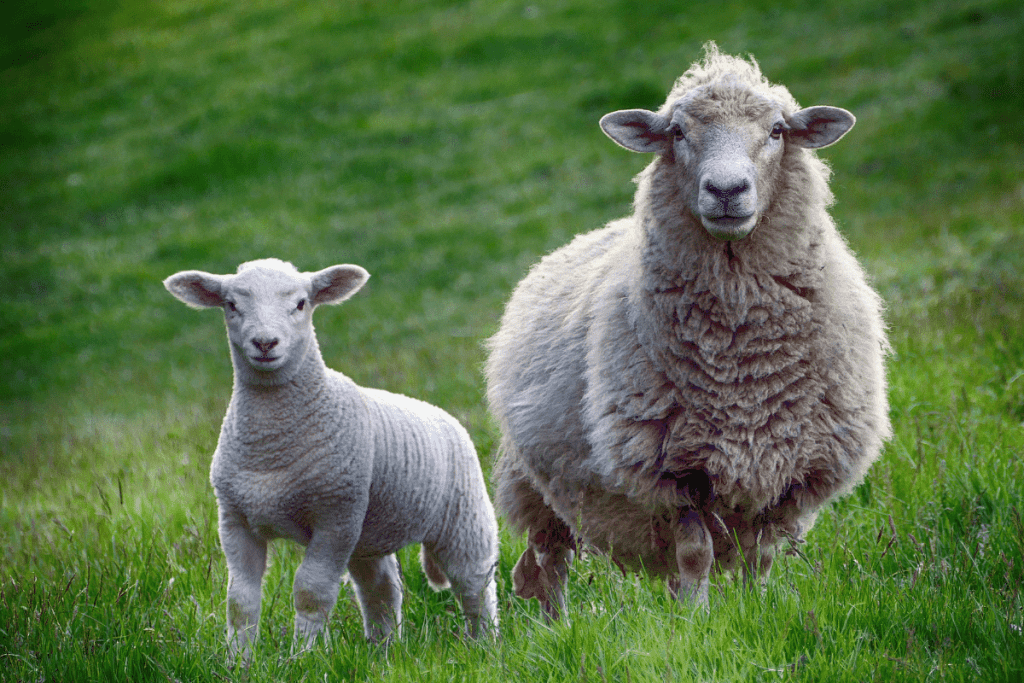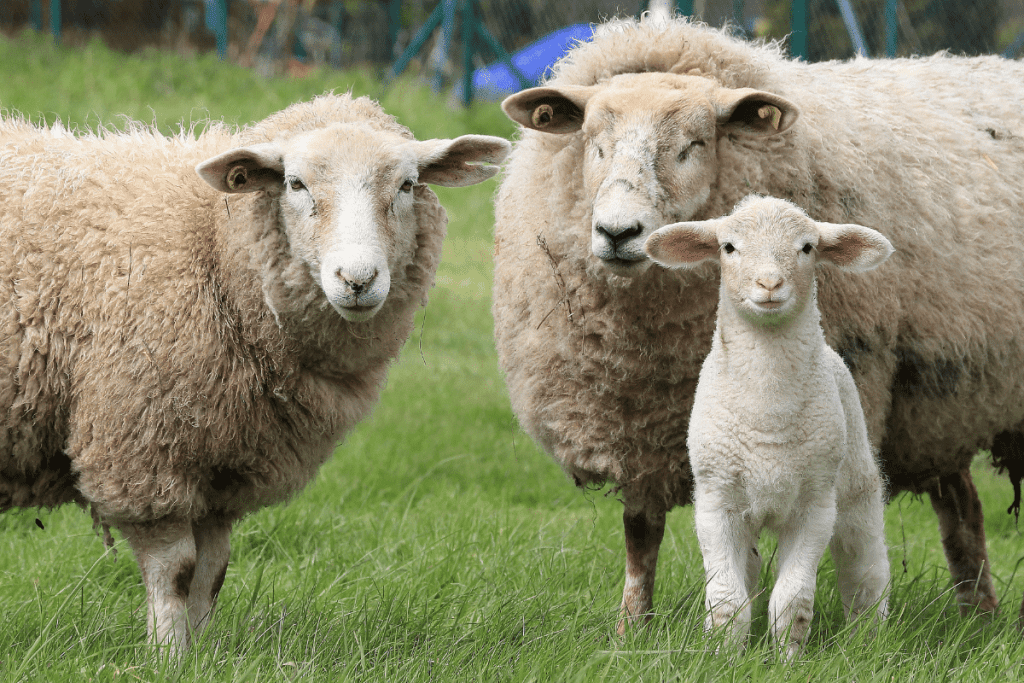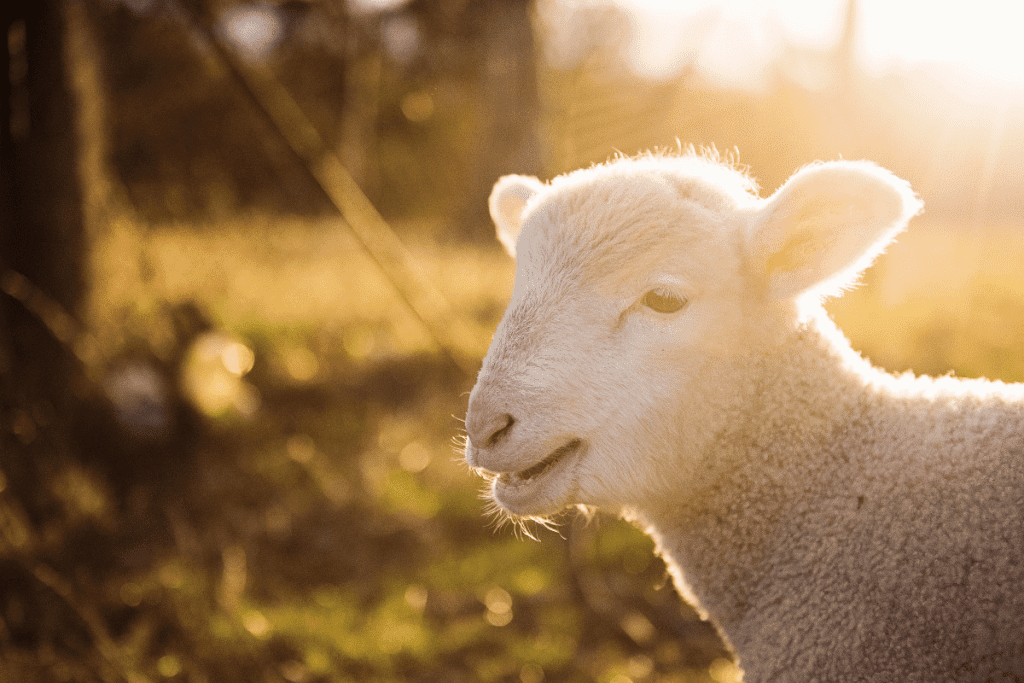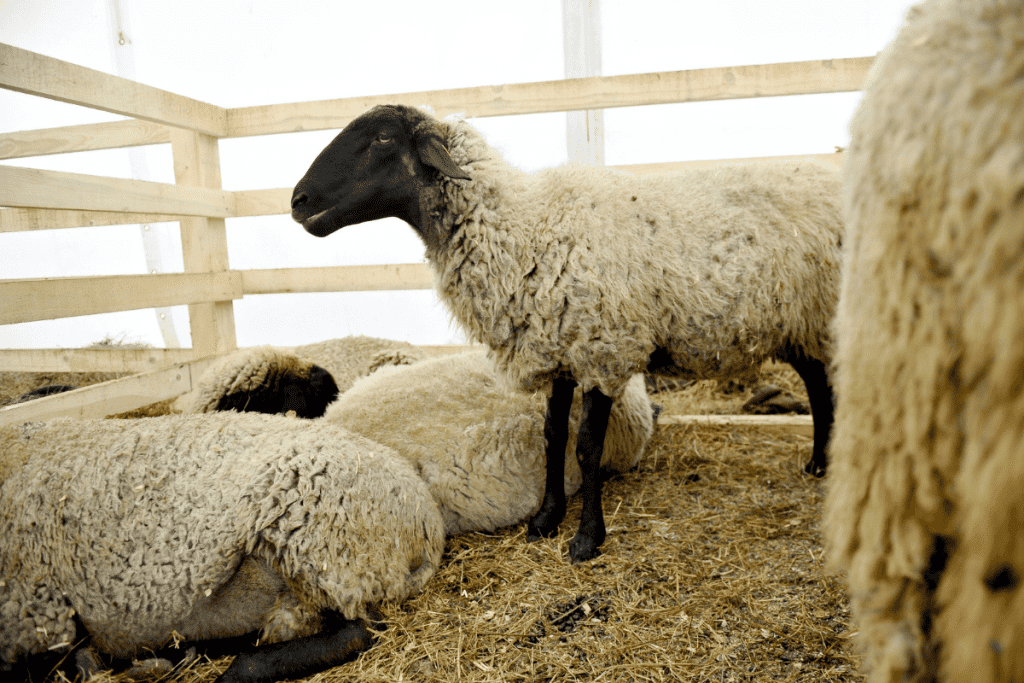If you are considering buying or adopting sheep, it is essential to consider the cost of sheep before you start your small sheep farm.
Sheep are sometimes quite expensive, including food, housing, and veterinary bills.
It can cost more than $500 to purchase the sheep themselves, and it can cost more than $900 annually to care for just one sheep. It is essential to decide whether you are prepared to take on these costs before buying sheep.
There are many questions about the cost of raising sheep which might be running through your mind.
Read on to find answers to all of your questions about the costs of buying and raising sheep.

Table of Contents
ToggleWhat Are Major Factors In The Cost Of Owning A Sheep?
When calculating the average annual sheep cost and choosing to create a sheep business, there are many factors to consider.
Besides the start-up costs of getting your farm set up to house sheep safely and the costs of buying the sheep in the first place, there are regular costs that come with caring for sheep, which you must be aware of.
These include feed, shearing, veterinary care, and housing and pasture for your farm’s sheep population.
This is a good bit of money when all is added up.
Cost of Feed
While sheep are best fed on grassy pasture during dry seasons, you may need to supplement their diet with hay if you live in a temperate area where grass dies in the winter or if their pasture is small.
The cost of hay depends on where you live, but one can generally buy 50 lbs of high-quality hay for about $15-20.
Sheep eat about 2%-3% of their body weight in hay per day, and ewes can weigh more than 200 lbs.
This means a ewe weighing 200 lbs will eat about 4 lbs of hay per day.
If a pound of hay is approximately $0.40 at premium prices, the cost of feeding one sheep hay every day for one year is about $584.
Of course, it is possible to drive this cost down by supplying open pasture to your ewes for grazing during the summer months.
However, because of the significant variability in hay prices, climate, and sheep size, we will use this number as the annual cost of feeding one sheep.
It is important not to buy cheap hay for your sheep to cut costs.
Sheep need a good blend of legumes and grasses to stay healthy, and buying high-quality alfalfa hay is the best option.
Cost of Shearing One Sheep
Most shearers charge less for large numbers of sheep, as it makes their driving and waiting time worth it.
A shearer may charge as much as $125 to cover gas prices and driving time to shear one sheep.
However, shearing only needs to happen once a year, so this is just an annual cost.
Cost of Veterinary Check-up for One Sheep
Sheep require regular vet check-ups to make sure they are healthy.
Vet visits typically run around $100, and it is probably best to have your sheep checked by a vet at least twice annually.
If your sheep have any signs of intestinal parasites or other health issues, it is crucial to call your veterinarian immediately, even though it may be expensive.
Cost to Maintain Housing and Fencing for One Sheep
Another cost in time and materials will be maintaining your sheep’s housing and fencing.
It is tough to know precisely how much damage your setup may incur each year, so it is difficult to calculate an exact value for this item.
How Much Does A Sheep Cost?

Female sheep typically cost anywhere from $200 to $250, and you’ll want to buy at least two as they are social animals. This puts the cost of sheep to begin a flock at least $500.
If you are just beginning your sheep-owning journey, you’ll want to buy mature ewes to start your flock.
Ewe lambs (or ewes in their first year of age) are inexperienced breeders who may have trouble giving birth and exhibit behavioral issues.
While it may be tempting to purchase ewe lambs, it’s vital to remember ewe lambs are less developed than 2-4-year-old ewes, meaning they require more care and may not produce or raise their lambs as easily as mature ewes.
If you are an inexperienced sheep farmer, lambs are probably not the right choice for you.
Where To Buy Sheep?
The best source to buy healthy sheep from is a reputable, local breeder. Buying sheep from large sheep auctions or breeders you aren’t familiar with can result in purchasing ill-bred animals or animals with health conditions that will require extra veterinary care and may interfere with their reproduction.
To find a local breeder, attend county fairs or livestock festivals and examine the sheep from each farm for indications of health problems.
When you find a farm that produces high-quality sheep, express your interest in purchasing sheep from them and ask them if they would be willing to sell animals to you.
A critical part of buying healthy sheep is visiting the farm where they live and are raised.
Their environment can tell you a lot about the quality of the farmer and the sheep.
It is best to purchase sheep from a clean, well-kept farm with many healthy animals.
What To Look For When Buying Sheep
There are many things to consider when purchasing excellent quality sheep, including the environment they live in, the sheep they were bred from, and the condition of their eyes and feet.
First, it is essential to inspect the sheep’s farm for signs of damage or filthiness.
If fencing is dilapidated or the barn is full of feces, the farm may not be a reliable place to purchase sheep which have been well cared for.
You need to ask what the sheep eat, how often they are being fed, and how much pasture they are used to.
It is essential to provide an environment the sheep will be comfortable in, one which is most similar to what they are used to living in.
If the farmer feeds them hay you’ll be able to afford, and the sheep are used to living on about the same amount of land you’ll have them on, you may have found a good source for your ewes.
Additionally, it is essential to check the eyes of the sheep before purchasing them.
The eyes of sheep are excellent indicators of whether they have parasites, which they are prone to.
To check the eyes of a sheep, pull their eyelid back and examine the color.
If it is a bright red, they are not anemic and probably do not have parasites.
However, if it is more of a light pink or even pale cream, they are highly anemic and likely have high levels of parasites for which you’ll need to treat the sheep.
You’ll also want to check the feed of the sheep you’re considering buying.
You need to look for signs of foot rot, which is a common problem among sheep and is difficult to treat during warmer seasons.
It’s also important to ask the farmer why the sheep are being sold.
If the farmer is just done with farming or has too many lambs, then these may be good sheep to buy.
However, if the farmer is reluctant to answer why the sheep are being sold, they may have underlying health conditions that would make them a bad purchase.
Should You Buy Lambs Or Ewes?

While it may be tempting for the prospective sheep owner to purchase ewe lambs for their starter flock because they are cheaper and just so cute, buying two to four-year-old ewes is typically a better choice for new sheep owners.
While lambs are inexperienced breeders who may not know how to give birth or take care of their young, seasoned ewes who are more than two years old will do a much better job of birthing and raising the lambs they produce.
If you are looking for a brood flock, purchasing ewes is better than lambs.
This being said, if you’re willing to put in the time and effort necessary to raise lambs and breed them later, they are a much cheaper option than older ewes.
How Much Land Do You Need For Two Sheep?
For two ewes, you’ll need at least an acre of pasture for green feed and at least 50′ square feet of indoor barn space for them to graze on and live in. Each sheep requires at the bare minimum 25′ square feet of barn space when it is cold outside, ideally a higher number.
Raise no more than four ewes on each acre of land because if you cram more ewes into the pasture, they will not have enough food or space to move around in.
So for two ewes, you’ll need at least one acre of pasture land and a small indoor space for them to stay in while it is cold outside or when they need a break from the sun.
Is It Profitable To Raise Sheep?
Depending on your level of experience with raising sheep and marketing their products, raising sheep is sometimes profitable. The more sheep you have, the more product they will create, which may be sold, making it easier to profit from them.
Some ways to profit from sheep farming are selling wool, selling milk and cheeses, selling lanolin, and renting out rams for breeding.
Learn where to sell sheep wool in our article here.
There is large variability in profit margins for each product, depending on how many sheep you have and how much you market your products.
Of course, profit is not everyone’s first consideration.
People also keep sheep as pets or clear the land of tall grasses.
Before investing in sheep, determine what your goal is and how much profit you’ll need to make from them to make it worth it to you.
You may not feel the need to make a profit at all, or you may want to start a fully-fledged sheep business as soon as possible.
Considering these options is essential before buying sheep.
How Much Are Start-up Costs For A Sheep Farm?

The significant start-up costs for a sheep farm are land, fencing, a barn for the animals, and the sheep themselves. These costs are quite variable but expect to spend somewhere around $65,000-100,000 for the facilities to keep the sheep.
The major differences are that some people start with a barn and a large amount of land they already own, while some have no land and need to purchase a farm along with their sheep to get started.
Especially if you live in a colder climate or plan to lamb your ewes on your farm, you’ll need adequate barn space to keep them safe from the elements and give them a place to raise their young.
A barn can cost up to $50,000 to build, making it a very expensive start-up cost for the new sheep farmer.
Purchasing a farm with land and a barn is even more expensive.
The cost of land is also incredibly variable.
An acre of land can cost $1,500 to almost $200,000, depending on the location and land.
It is essential to do your market research when purchasing land so you are able to create a budget for your farming adventure.
The cost of building fences for pasture is another crucial factor to consider when beginning a sheep farm.
It costs about $2,000 to fence one acre of land, meaning this start-up cost is relatively high.
Tips For Buying Sheep
- Don’t buy sheep from sale barns or auctions, as these animals often have health problems and have not been cared for properly. Purchase healthy sheep from reputable breeders with flock records.
- Check the sheep’s eyes for signs of anemia, pulling back their eyelids and examining the color of the inside of their eyelids. Red is great to see, while pale pink or cream-colored means anemia.
- Check the sheep’s feet for signs of foot rot, a common and difficult-to-treat condition.
- Check the sheep’s weight and spine to see if they are under or overweight.
How Do I Choose A Sheep Breed?
To choose the right sheep breed for your farm, it is vital to examine the climate of your area, your pasture conditions, how much time you’re willing to spend on your sheep, how many predators are nearby, and whether there is a high risk of parasites in your area.
Choosing your ideal sheep breed depends on what you intend to keep your sheep for.
Sheep intended for wool production are different from sheep killed for meat.
Additionally, different sheep breeds perform differently in various climates and farm environments.
You also need to consider what you’re raising your sheep for.
Meat sheep breeds produce fast-growing lambs with more meat on their bodies.
Related: 10 Best Meat Sheep Breeds
However, these sheep often have a lower lambing percentage than other breeds, meaning overall, each ewe produces fewer lambs.
There are also sheep known for raising their lambs, called maternal sheep breeds or wool sheep breeds.
These are the sheep who are best at caring for their young and produce the most lambs by twinning.
They require less supplemental food than meat sheep and grow slower than meat sheep.
Related: Sheep breeds with black faces
Ways To Cut Costs When Raising Sheep

Cut costs for raising sheep by buying hay in bulk to last you through winter earlier in the season, utilize pasture during the warm months, and learn care steps like trimming hooves to do on your own and avoid the cost of paying someone else.
It is essential not to cut costs too much when raising sheep.
Being aware of exactly how much money you’ll be spending on your sheep is essential, as you don’t want to end up with underfed or unhealthy sheep.
This being said, there are a few safe ways to cut costs while raising sheep.
One of the most important ways to cut costs is to purchase more than enough hay to last you through the winter, as hay prices are much higher in wintertime due to a lower supply of hay.
If you find yourself running out of hay in the middle of winter, it will put you in a pinch and force you to spend more money than you want to on food for your sheep.
Another way to save money on food for your sheep is to ensure they have more than enough pasture to feed on during whichever seasons plants grow.
The more you feed your sheep on pasture, the less you’ll need to spend on hay and grain for your sheep to eat.
Additionally, having enough land to rotate your sheeps’ pasture makes it less likely they will contract intestinal parasites, cutting deworming costs drastically.
Even simple things like being aware of your animals’ water intake and keeping fresh, clean water available to them at all times can cut costs by preventing heatstroke and dehydration.
These conditions often require expensive veterinary care, making it essential to avoid them to save money.
It is also possible to cut costs by learning to perform hoof trimmer independently rather than hiring a veterinarian to do it.
Similarly, it is possible to learn to shear your sheep to cut shearing costs.
Related: How much does sheep shearing cost?
Is It Okay To Buy Just One Sheep?
We don’t recommend you purchase a single sheep, as they are herd animals and will be happiest and healthiest living with other sheep. Even buying two sheep is a risk, as most healthy sheep get pretty stressed out if they are not kept in groups of at least three.
This depends on the breed you purchase and how strong their flocking instinct is.
How Many Sheep Should You Buy?
A minimum of two sheep will suffice to begin a flock, but three or four is better, as they can develop relationships and care for each other in the pasture. Like many livestock species, sheep have a strong flocking instinct, meaning they feel safest from predators in groups.
The more, the better, but flocks of three to five sheep can work well.
As long as you have the space and money to support more sheep, it is a good idea to buy as many sheep as possible for your first flock.
Of course, if you don’t have time or money to care for this many sheep, buy fewer.
What if You Don’t Need to Make Money From Your Sheep?
If money is not your concern when purchasing and raising sheep, this is okay too!
It’s completely fine to simply keep sheep to keep your grass short or for their companionship.
It is also an option to raise sheep simply for your benefit, their meat, and their wool.
While it is nice to profit from your sheep, it’s not necessary for everyone, and this is okay.
Can You Keep a Sheep as a Pet Indoors?
If you are less worried about the profitability of keeping sheep and are looking into keeping sheep as pets, you may be considering keeping sheep in your house or backyard.
While this can sometimes work, very specific circumstances must allow it to be effective.
Most sheep raised by their mothers on a farm will not make good indoor pets.
They have already developed their flocking instinct, are not house trained, and are accustomed to having large pasture areas to roam around in.
It is crucial you do not buy sheep from a farm and then keep the sheep indoors.
This being said, lambs who humans bottle-feed from an early age have a better chance of being good pets.
If you find an abandoned lamb with no mother and you bottle-feed it indoors and house train it, the lamb may become a lovely pet for your household.
Just ensure your sheep has ample outdoor area, at the very least a big backyard, and ideally some pasture land.
You may also train your sheep with treats or by using the clicker training method.
Need some help naming your sheep? Check out our massive list at the link.
How useful was this post?
Click on a star to rate it!
We are sorry that this post was not useful for you!
Let us improve this post!
Tell us how we can improve this post?
